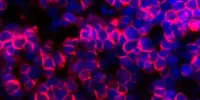The unifacial cambium forms cells in the interior of its cylinder. It refers to a form of cambium that develops most of its cells on one side. The cambium is a layer of meristematic tissue present in vascular plants such as trees and shrubs that is responsible for secondary growth.
These cells eventually develop into xylem tissue. Unlike the more prevalent bifacial cambium found in later woody plants, the unifacial cambium does not produce phloem on the outside. In contrast to the bifacial cambium, the unifacial cambium cannot expand its circumference through anticlinal cell division. Cell elongation offers a limited amount of expansion.
There are two types of cambium:
- Vascular cambium: This cambium produces xylem (wood) on the inside and phloem (inner bark) on the outside, thereby increasing the girth of stems and roots.
- Cork cambium (phellogen): This cambium produces cork cells on its outer side, which replace the epidermis in older stems and roots.
Unifacial cambium refers to vascular cambium that generates cells only on one side. Typically, vascular cambium is bifacial, which means it produces cells for both the interior (xylem) and the outside (phloem). However, in some plant species, particularly under certain conditions or at specific developmental phases, the cambium may produce cells primarily on one side. This could be due to a variety of genetic, environmental, or physiological variables impacting cambial activity.
Unifacial cambium plant morphology and life cycles
The unifacial cambium allows plants to reach heights of up to 50 metres. Unifacial cambium plants evolved alternative techniques for long-distance nutrition transfer in the absence of secondary phloem. Lycophyte trees, for example, had photosynthesizing leaf bases covering their stems.
Unifacial cambium plants had much less wood than current woody plants due to their limited circumferential growth potential. Xylem tissue in unifacial cambium plants was very structurally efficient. A unique periderm tissue in the outer cortex offered additional structural support to lycophytes.
Lycophyte trees have a set growth rate. These trees appear to have spent the most of their lives as a’stump’, forming root networks underground before swiftly growing, releasing spores, and dying.
In summary, unifacial cambium specifically describes a situation where vascular cambium produces cells primarily towards one side, instead of evenly producing xylem and phloem on both sides as is typical in bifacial cambium.
















